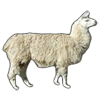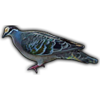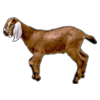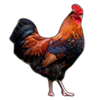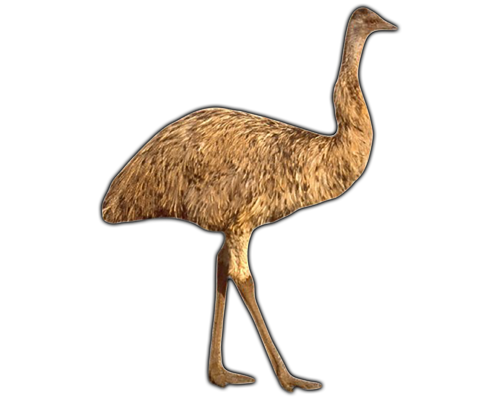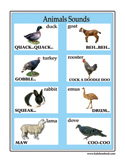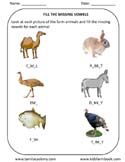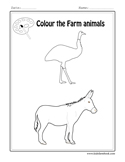DESCRIPTION:
The Emu is the largest bird native to Australia and the only extant member of the genus Dromaius. It is also the second-largest extant bird in the world by height, after its ratite relative, the ostrich. The soft-feathered, brown, flightless bird reach up to 2 metres (6.6 ft) in height. The Emu is common over most of mainland Australia, although it avoids heavily populated areas, dense forest, and arid areas. Emus can travel great distances at a fast, economical trot and, if necessary, can sprint at 50 km/h (31 mph) for some distance at a time. They are opportunistically nomadic and may travel long distances to find food; they feed on a variety of plants and insects.
The Emu subspecies that previously inhabited Tasmania became extinct after the European settlement of Australia in 1788; and the distribution of the mainland subspecies has been influenced by human activities. Once common on the east coast, Emu are now uncommon; by contrast, the development of agriculture and the provision of water for stock in the interior of the continent have increased the range of the Emu in arid regions. Emus are farmed for their meat, oil, and leather.
Emus are large birds. The largest can reach up to 150 to 190 centimetres (59 - 75 in) in height, 1 to 1.3 metres (3.3 - 4.3 ft) at the shoulder. Emus weigh between 18 and 48 kilograms (40 and 110 lb).
They have small vestigial wings and a long neck and legs. Their ability to run at high speeds, 48 km/h (30 mph), is due to their highly specialised pelvic limb musculature. Their feet have only three toes and a similarly reduced number of bones and associated foot muscles; they are the only birds with gastrocnemius muscles in the back of the lower legs. The pelvic limb muscles of Emus have a similar contribution to total body mass as the flight muscles of flying birds. They have a soft bill, adapted for grazing.
The neck of the Emu is pale blue and shows through its sparse feathers. They have brown to grey-brown plumage of shaggy appearance; the shafts and the tips of the feathers are black. Solar radiation is absorbed by the tips, and the loose-packed inner plumage insulates the skin. The resultant heat is prevented from flowing to the skin by the insulation provided by the coat, allowing the bird to be active during the heat of the day. A unique feature of the Emu feather is its double rachis emerging from a single shaft. The sexes are similar in appearance.
On very hot days, Emus pant to maintain their body temperature, their lungs work as evaporative coolers and, unlike some other species, the resulting low levels of carbon dioxide in the blood do not appear to cause alkalosis. For normal breathing in cooler weather, they have large, multifolded nasal passages. Cool air warms as it passes through into the lungs, extracting heat from the nasal region. On exhalation, the Emu's cold nasal turbinates condense moisture back out of the air and absorb it for reuse.
Their calls consist of loud booming, drumming, and grunting sounds that can be heard up to 2 kilometres (1.2 mi) away. The booming sound is created in an inflatable neck sac that is 30 cm (12 in) long and thin-walled.
|








